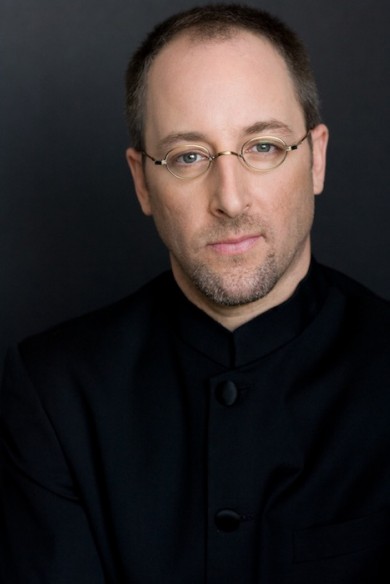New World serves up a wide-ranging, modern American triptych

Jeffrey Milarsky conducted the New World Symphony in music of Babbitt, Wuorinen and John Luther Adams Saturday night.
The New World Symphony’s “Sounds of the Times” series brings a cornucopia of contemporary music’s divergent styles to South Florida audiences. Saturday night’s first edition for the season of these enterprising programs featured new music specialist Jeffrey Milarsky on the podium and works by three generations of American composers.
Milton Babbitt’s scores are always filled with endless invention, the music going in unexpected directions. During his nearly seven-decade career, Babbitt–who logged several years working in Tin Pan Alley–created a plethora of brilliant and varied compositions, spanning orchestral, chamber, jazz and popular song genres.
All Set, a 1957 Babbitt work, mixes serialism with big band jazz. Scored for eight players, it seems like a typical band score with trombone, percussion and bass solos but there is no improvisation. The entire work is notated and sculpted with unusual precision.
All Set is a splendid piece, bubbly and snappy but always spinning multihued instrumental textures and rhythms. Milarsky’s buoyant leadership and the players’ sharp articulation aptly projected score’s lightness and grace.
The Babbitt work was accompanied by a video created by Clyde Scott, New World’s director of video production, in collaboration with the Rosie Herrera Dance Theater. In the film, two figures dance to the beat of Babbitt’s percussive underpinning, gradually coming together. Although videos can often be obtrusive and distracting to musical performances, Scott’s discreet images nicely complemented the score.
Charles Wuorinen is an uncompromising modernist but the gnarly atonality of his Bamboula Squared is leavened by an overlay of taped electronics plus an active and animated battery of four percussion players and piano. The writing for large ensemble is busy and colorful, displaying each of the orchestra’s choirs at full power and there are beautiful solos for flute and violin.
At times the electronics subtly blend with the instrumental forces. An extended electronic section seems like an interlude of serenity amid the high-energy orchestral pandemonium. The final pages recall Stravinsky’s Rite of Spring in headlong drive. Milarsky was alive to the continuous shifts of rhythm and dynamics and the players tore into Wuorinen’s fierce writing with enthusiasm and force.
The evening’s main event was the South Florida premiere of John Luther Adams’ Become Ocean, the winner of the 2014 Pulitzer Prize for music. Adams took the title from a poem by iconoclastic composer John Cage in tribute to composer Lou Harrison, who Adams described in a video introduction as one of his mentors.
The score’s title also refers to environmental concerns. On a rainy weekend when a coastal flood watch was in effect for Miami Beach, the timing could not have been more prescient.
Aside from these topical issues, the score is a terrific soundscape. The ensemble was divided into three groups with strings at the front of the New World Center stage, winds at left rear and brass on the far right. Each group plays different music with percussion, four harps and two pianos (in the middle of the orchestra) interacting with each ensemble, providing the music’s pulse and gentle overtones.
Adams paints in waves of sound, paralleling the ocean’s churning currents. The sections converge in sudden bursts of massive sonorities but, for most of the work’s 42 minutes, the music is quiet, the textures luminous. Elements of impressionism and minimalism enrich Adams’ measured, hypnotic rumination. Near the conclusion, the roar of cellos and basses makes a striking effect and the music gradually fades back into the opening drone tones. Stage lighting enhanced the score’s layered, winding motion with blue projections on strings suggesting the ocean.
Milarsky brought subtlety and unflagging momentum to this major score. The New World players’ superb performance easily eclipsed the playing of the Seattle Symphony on the Grammy award-winning recording of the work. A spellbound audience remained quiet after the final bars, allowing space for Adams’ dark conclusion before the well-earned ovation.
The New World Symphony’s next “Sounds of the Times” event takes place 7:30 p.m. February 13 with Matthias Pintscher conducting his Four Pieces for Orchestra and works by Pierre Boulez and Unsuk Chin with clarinetist Jerôme Comte as soloist. nws.edu; 305-673-3331.
Posted in Performances
Leave a Comment
Sun Dec 6, 2015
at 12:19 pm
No Comments






